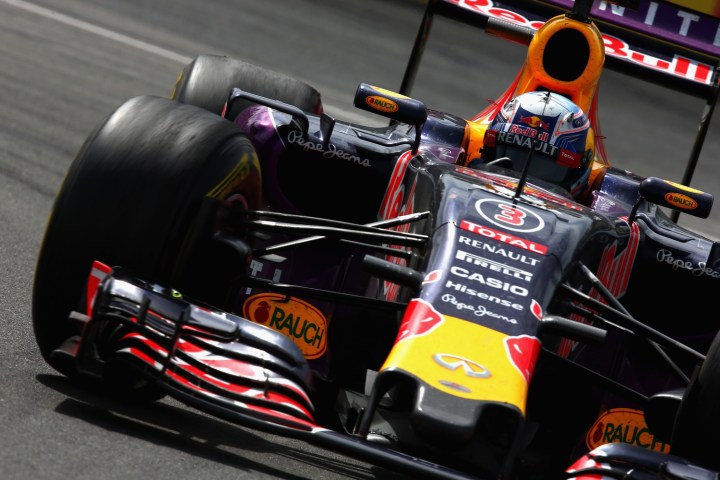
Officials are considering a canopy design known as the “Halo” as part of sweeping changes to car-design rules set to take effect in 2017, according to Motorsport. The canopy wouldn’t fully enclose a car’s cockpit, but it would provide significant protection from airborne debris, advocates say.
Some form of “Halo” has already been mandated for the 2017 season, the report says, but the design hasn’t been finalized. It will most likely have a semi-circular piece surrounding the driver’s head (hence the name “Halo”), with an upright piece in front of the driver to support it. Debate now seems to center on whether the structure should be enclosed around the front with some kind of clear material, or left open.
Seemingly small details like this can ignite big arguments among F1’s teams and officials, and in fact the windscreen won’t be ready for 2017. The matter will be further discussed at an upcoming Technical Regulations Meeting, and teams want to test the windscreen concept to make sure it provides a real benefit. The Halo itself is a go, though.
The death of Justin Wilson from head injuries sustained during a collision with another during an IndyCar race last year have intensified calls for greater driver protection. But the use of closed cockpits in F1 has been criticized because of other potential safety issues. There have been concerns that drivers may not be able to get out of cars fast enough in emergencies, or that rescue workers may waste too much time removing canopies.
First proposed by Mercedes-Benz, the Halo is supposed to address those concerns with its open-topped design. It won’t be the only significant change on the F1 grid for 2017. New rules are expected to affect everything from aerodynamics to engine performance, in an effort to make F1 cars faster, and generally more exciting.
Editors' Recommendations
- Insta360 cameras take a speedy ride around Monaco’s F1 track
- F1 driver in fireball crash is certain the car’s halo saved his life
- Porsche will use discarded F1 tech for a new hybrid supercar, report claims
- Formula One is adding cost caps in 2021, so teams are spending even more for 2020
- Formula 1 shows off its 2021 designs, changes rules to balance the playing field


